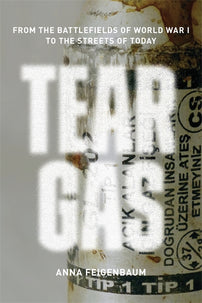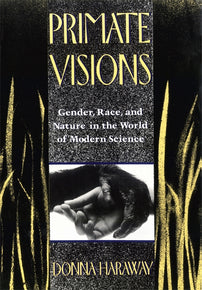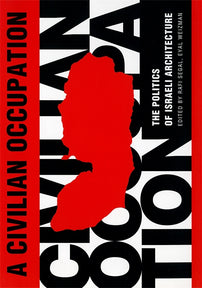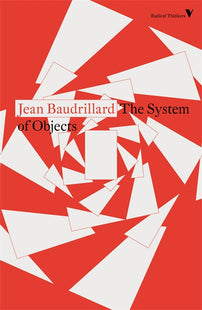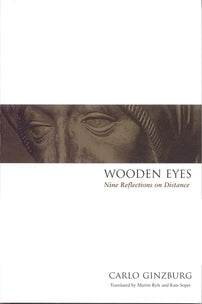Five Book Plan: Objects and Atmospheres
Anna Feigenbaum, author of Tear Gas, selects five essential books that theorize objects and atmospheres.

In this Five Book Plan, Anna Feigenbaum, whose Tear Gas: From the Battlefields of WWI to the Streets of Today is out now from Verso, selects five essential books that theorize objects and atmospheres.
Peter Sloterdijk, Terror from the Air (Semiotext(e), 2009)
Soon after my book project started in 2012, it became clear that if you told a critical theorist you are working on tear gas, they would invariably suggest the same text to you. I discovered this after the seventh well-meaning (usually bearded) person asked, “Have you read Sloterdijk?”
Thankfully Terror from the Air is very short book, so it was an easy suggestion to indulge — and a worthwhile one. In this brief book, Sloterdijk shows how the atmosphere itself became a militarised measurement on which life or death can rest. For Sloterdijk, the design of war gases involves turning the very act of breathing into an act of terror. We are forced to become, as he puts it, unwilling accomplices in our own annihilation. This transformation of air into a site for terror, he argues, is what brought the atmosphere into political, legal and medical consideration. The strength of Sloterdijk’s investigation here lies in its ability to interlace historical developments with concepts of biopower, stringing together a narrative of how atmospheres came to be weaponised and governed.
Bruno Latour, Reassembling the Social (Oxford University Press, 2007)
Few people have mild opinions on Bruno Latour. Dividing technology theorists for decades now, Actor Network Theory is embraced as discipline shattering genius by some and disregarded as nonsense by others. After my first encounter with Latour, I threw Aramis across the room in fit of frustration, but Reassembling the Social won me over — or at least provided my favourite quote for the study of objects:
Specific tricks have to be invented to make them talk, that is, to offer descriptions of themselves, to produce scripts of what they are making others — humans or non-humans — do.
In Reassembling the Social, Latour attempts to respond to his critics, clarifying some of the key points in his earlier works. This makes the book an excellent entry point for grappling with the implications of ANT. I use it to teach graduate students, prompting debate around three talking points and their implications for studying social history, culture, and technology:
1. Nonhuman actors have agency. This is not political agency, but rather the ability of objects to have a variety of effects on other humans and nonhumans.
2. Organisations (or other assemblages) are not already social. Instead, they must be studied as momentary associations between human and nonhuman actors. This does not mean that there is not power or hierarchies and structures, but rather that “we wish to explain those asymmetries” and not “to simply repeat them.”
3. Methodologically, this requires paying attention to moments of visibility of objects in networks. Namely, Latour calls for the study of: innovations; technological learning (and failures to learn); accidents, breakdowns and strikes; objects that have receded into the background; and using the tools of fiction to get to know objects in new ways.
Seen not as an all-encompassing theory of technology, but rather as a repertoire of tactics for approaching the study of objects, Reassembling the Social helps us move differently through the archives and annals of science.
Donna Haraway, Modest_Witness@Second_Millennium. FemaleMan©_Meets_OncoMouseTM (Routledge, 1997)
Donna Haraway’s famous essay "Cyborg Manifesto", included in Simians, Cyborgs and Women (1991), won her a spot — often as the only woman — on critical theory readings lists throughout the 1990s and 2000s. Her feminist critique of science and technology laid the groundwork for future generations of feminist scholarship. Yet in 1998, the release of her follow up book, Modest_Witness, rarely got the same level of attention. Sequels, and particularly sequels with @ signs in their titles, often cannot live up to their promise. But inside Modest_Witness is a mess of buried gems that can be mined to make some excellent interventions into traditional approaches to studying technology.
Connected to the notion of "cyborg writing" developed in Haraway’s "Cyborg Manifesto," in Modest_Witness she challenges traditional notions of discourse, arguing, “Discourses are not just ‘words’; they are material-semiotic practices through which objects of attention and knowing subjects are both constituted.” Haraway captures how language practices are intimately bound up with the ways we relate to technological objects and to the technological environments in which we live. Investigating how the language used around technology is always both metaphorical and material allows for a better interrogation of power, vested interests, and opportunities for resistance. In other words, it helps us connect the politics of how we name and classify technologies, with the ways in which they are developed, manufactured, marketed and moved around the world. At the same time, a "material-semiotic" approach can help us understand how seemingly symbolic acts of resistance can have powerful material affects. For example, every tear gas canister turned into a flowerpot or grenade pin made into a piece of jewelry is not just a symbolic gesture, but also a material way of reconstituting these objects and the environments they exist in, of transforming ourselves and others.
Sarah Ahmed, Queer Phenomenology: Orientations, Objects, Others (Duke University Press, 2006)
In her work on queer phenomenology Sarah Ahmed offers another way of looking at objects and our entanglements with them. While Ahmed often gets collected conceptually among the "new materialists," here projects arise from a deeply empirical grappling with colonialism, gender, and race. For Ahmed the messiness of entangled human and nonhuman actors — or just people, emotions, and objects — as she usually calls them, is always bound up in questions of power and our relationships to others. In Queer Phenomenology Ahmed interrogates what is in "the background." For Ahmed the background is not simply what is faded from view, but rather, “things that are relegated to the background in order to sustain a certain direction.” It is this relegation to the background that “keeps attention on what is faced.” In other words, Ahmed prompts us to ask: What are the other objects, orientations, relationships, and past experiences that not only make up what we see before us, but how we have come to see it that way? By bringing the background into critical view, Queer Phenomenology enables us to draw attention to those other stories of objects — the ones that have all too often been bracketed off, blackened out, and shredded from the archives.
Eyal Weizman, The Roundabout Revolutions (Sternberg Press, 2015)
Full disclosure, Roundabout Revolutions was the first publication to cite Tear Gas. My research is heavily influenced by Weizman’s work — both his publications and his collaborations on the Forensic Architecture project (a direct inspiration for our own RiotID). So clearly, I am biased on this one. But this bias arises from the deep dialogues between activist-scholars that make our work possible.
More of an extended essay than a book, The Roundabout Revolutions details the architectural development of roundabouts and their recent roles in social uprisings. Like all of Weizman’s work, in The Roundabout Revolutions architecture is at the centre of the story. By outlining glimpses of the historical coming to be of the roundabout, Weizman offers internationally contextual, politically rich readings of these architectural spaces and objects. Bringing together patents, policies and urban plans, Weizman situates roundabouts in broader cultural ideologies to make sense of how design is motivated. Borrowing Langdon Winner’s famous words, this method reveals how artefacts can have politics. Such close looking at objects also uncovers possibilities for sabotage and subversion, for revolution and counter-revolution. Citing Egyptian activist/urbanist Sherief Gaber, Weizman writes that Tahrir Square was “continuously seen as a protest zone in potentia.” It is often this potential that authorities are determined to control. If roundabouts are the architectural spaces — the squares and circles and centre points — that bring people together, then tear gas is their counter-technology, the object designed to break people apart.
[book-strip index="1" style="display"]